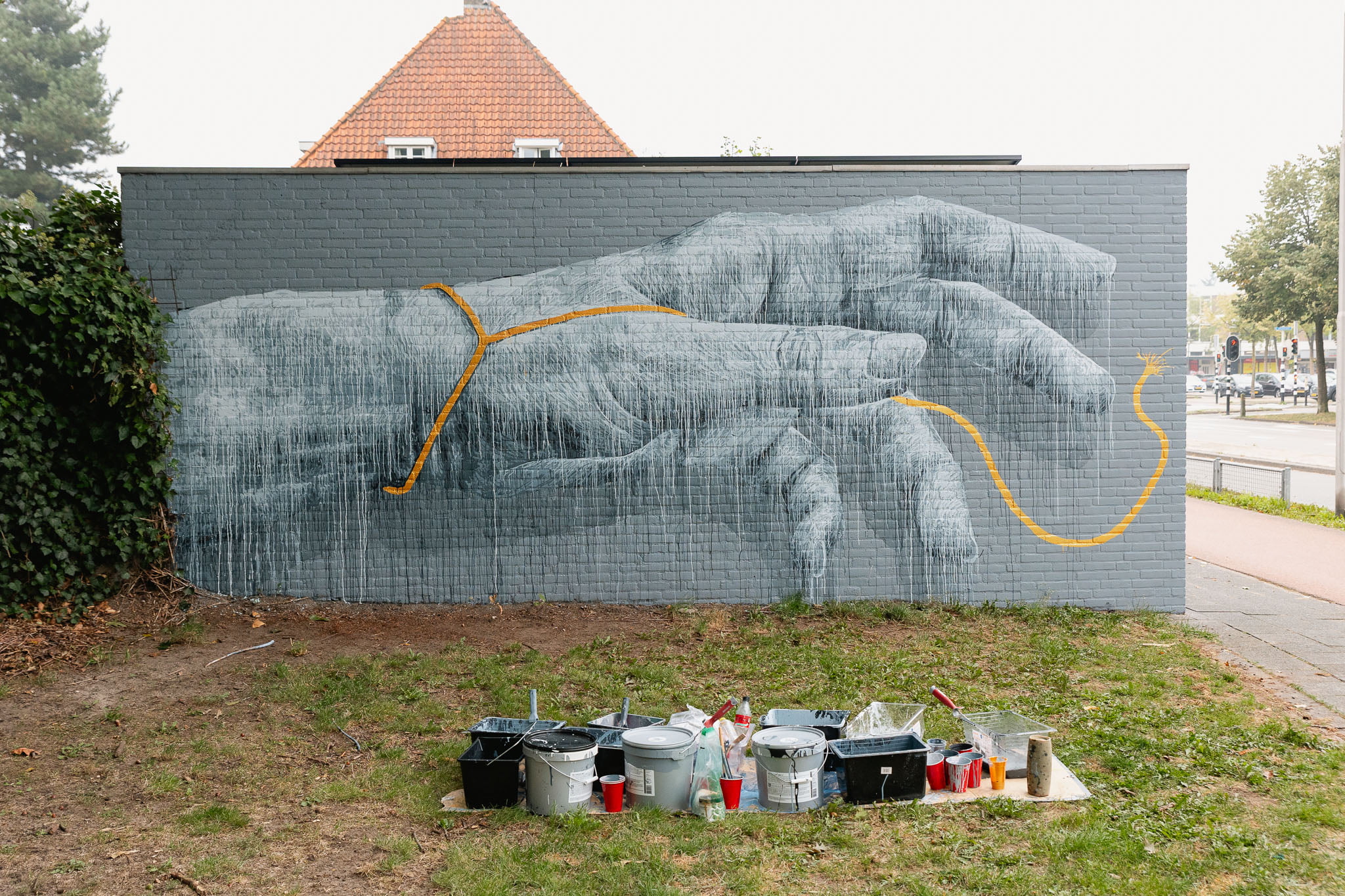Moederheil was the largest halfway house in the Netherlands until the late 1960s. Halfway houses were maternity hospitals for unmarried mothers, women and girls who were considered unable to care for their children or for whom the shame of having a child was too great. After giving birth, they immediately had to give up their child for adoption, often without any further contact. Not the biological bond with the mother, but the bond to be built with the adoptive family was considered essential for the child.
In the 20th century, between 15,000 and 25,000 children were given up for adoption in the Netherlands.

Foto uit collectie Stadsarchief
Design
Nils has had many conversations with the group involved supported the arrival of this Blind Wall. Those conversations inspired him to create a work of art that reflects this painful past. The common denominator in the personal stories was the moment of separation between mother and child. This is symbolized in the mural by a broken golden cord and two hands: one of the mother and one of the child, both with a cord around their wrist that breaks at the corner of the facade. By placing the hands separately on different sides of the wall, the stories can also be viewed separately, as all stories of those involved are unique.

Photo by Chantal van den Berg
This mural was created through close collaboration between the Moederheil working group, Blind Walls Gallery and Breda City Archives, with the cooperation of the Municipality of Breda.
 Share wall
Share wall
